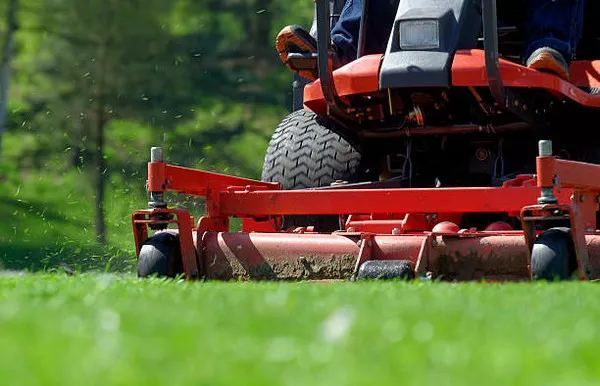Lawn mowers are essential tools for maintaining a healthy and attractive lawn. While many homeowners may focus on the features and brand of their lawn mower, the type of gas used is equally important. Selecting the appropriate fuel for your lawn mower not only ensures optimal performance but also prolongs its lifespan. In this article, we will explore the various options available and offer insights on making the best choice for your lawn mower’s specific needs.
Understanding the Basics of Gasoline
Before delving into the different types of gasoline, it’s essential to understand the basics of this fuel. Gasoline, commonly referred to as petrol, is a refined product derived from crude oil. It primarily consists of hydrocarbons, and its performance in internal combustion engines depends on its octane rating.
Octane rating is a measure of a fuel’s resistance to knocking, a phenomenon where the air-fuel mixture ignites prematurely in the engine. Fuels with higher octane ratings have better resistance to knocking, making them suitable for high-compression engines.
Types of Gasoline for Lawn Mowers
When selecting the right type of gasoline for your lawn mower, you’ll likely encounter three common options: Regular, Mid-grade, and Premium. Each type varies in its octane rating and contains specific additives. Let’s explore them in detail:
a. Regular Gasoline (87 Octane)
Regular gasoline, typically labeled as 87 octane, is the most common and widely available option. It provides adequate performance for most small engines, including lawn mowers. If your lawn mower’s manufacturer recommends using 87-octane fuel, regular gasoline is the suitable choice.
b. Mid-grade Gasoline (89 Octane)
Mid-grade gasoline, labeled as 89 octane, offers a slightly higher resistance to knocking compared to regular gasoline. However, for most lawn mowers, there won’t be a noticeable difference in performance when using mid-grade instead of regular gasoline. Therefore, it is generally unnecessary to opt for mid-grade gas unless explicitly recommended by the lawn mower’s manufacturer.
c. Premium Gasoline (91-94 Octane)
Premium gasoline, boasting an octane rating of 91 to 94, provides the highest resistance to knocking. However, using premium gasoline in lawn mowers designed for regular gasoline offers minimal to no performance benefits. Moreover, premium gasoline comes with a higher price tag, making it an uneconomical choice for small engines.
Ethanol-Blended Gasoline
Ethanol-blended gasoline has gained popularity in recent years due to its potential environmental benefits. It contains ethanol, a renewable biofuel often derived from corn. Common blends include E10 (10% ethanol) and E15 (15% ethanol). While E10 is widely available, E15 may be restricted in some regions and is not suitable for all lawn mowers.
Pros of Ethanol-Blended Gasoline:
Ethanol reduces the emission of certain pollutants, contributing to better air quality.
It supports the domestic production of renewable energy.
Cons of Ethanol-Blended Gasoline:
Ethanol can absorb moisture from the air, leading to phase separation and fuel degradation, especially in small engines with infrequent use.
Older lawn mowers and small engines may not be designed to handle higher ethanol blends, potentially causing engine damage.
It’s crucial to consult your lawn mower’s manual before using ethanol-blended gasoline. Some newer models are designed to handle E10 blends, but E15 may not be recommended.
Non-Ethanol Gasoline
For lawn mower owners concerned about the potential drawbacks of ethanol-blended gasoline, non-ethanol gasoline, also known as pure gas, is an alternative. Non-ethanol gasoline contains no ethanol and is less prone to moisture absorption and fuel degradation.
Pros of Non-Ethanol Gasoline:
Less likely to cause fuel-related issues in small engines.
Ideal for lawn mowers with low usage frequency, such as seasonal equipment.
Cons of Non-Ethanol Gasoline:
Generally more expensive than ethanol-blended gasoline due to the refining process.
Non-ethanol gasoline is often available at specific gas stations, commonly labeled as “pure gas” or “ethanol-free.”
Storing Gasoline for Your Lawn Mower
Proper storage of gasoline is crucial for maintaining its quality and preventing engine problems. Here are some essential tips for storing gasoline:
a. Use a Gas Can:
Always store gasoline in an approved gas can designed for fuel storage. Avoid using containers that previously held chemicals or other substances, as they can contaminate the gasoline.
b. Add Fuel Stabilizer:
If you expect your lawn mower to remain unused for an extended period, consider adding a fuel stabilizer to the gasoline before storage. Fuel stabilizers help prevent fuel degradation and engine problems caused by stale gasoline.
c. Store in a Cool, Dry Place:
Keep the gas can in a cool, dry area, away from direct sunlight and heat sources. Avoid storing gasoline in a lawn mower’s fuel tank when not in use.
Conclusion
Selecting the right type of gasoline for your lawn mower is crucial for its performance and longevity. Regular gasoline with an octane rating of 87 is sufficient for most lawn mowers, while premium gasoline offers no significant advantages. When considering ethanol-blended gasoline, be cautious about higher blends like E15, as they may not be suitable for all lawn mower models.
For those concerned about fuel degradation and potential engine issues, non-ethanol gasoline can be a viable option. By adhering to proper gasoline storage practices, you can ensure that your lawn mower operates optimally and serves you well for years to come, maintaining a pristine and healthy lawn.

